L-shaped garden ideas designers say can transform an awkward plot into an asset – 8 clever ways to make this unusual shape work for you
Turn your L-shaped garden into an asset with these expert ideas to help you transform your outdoor space

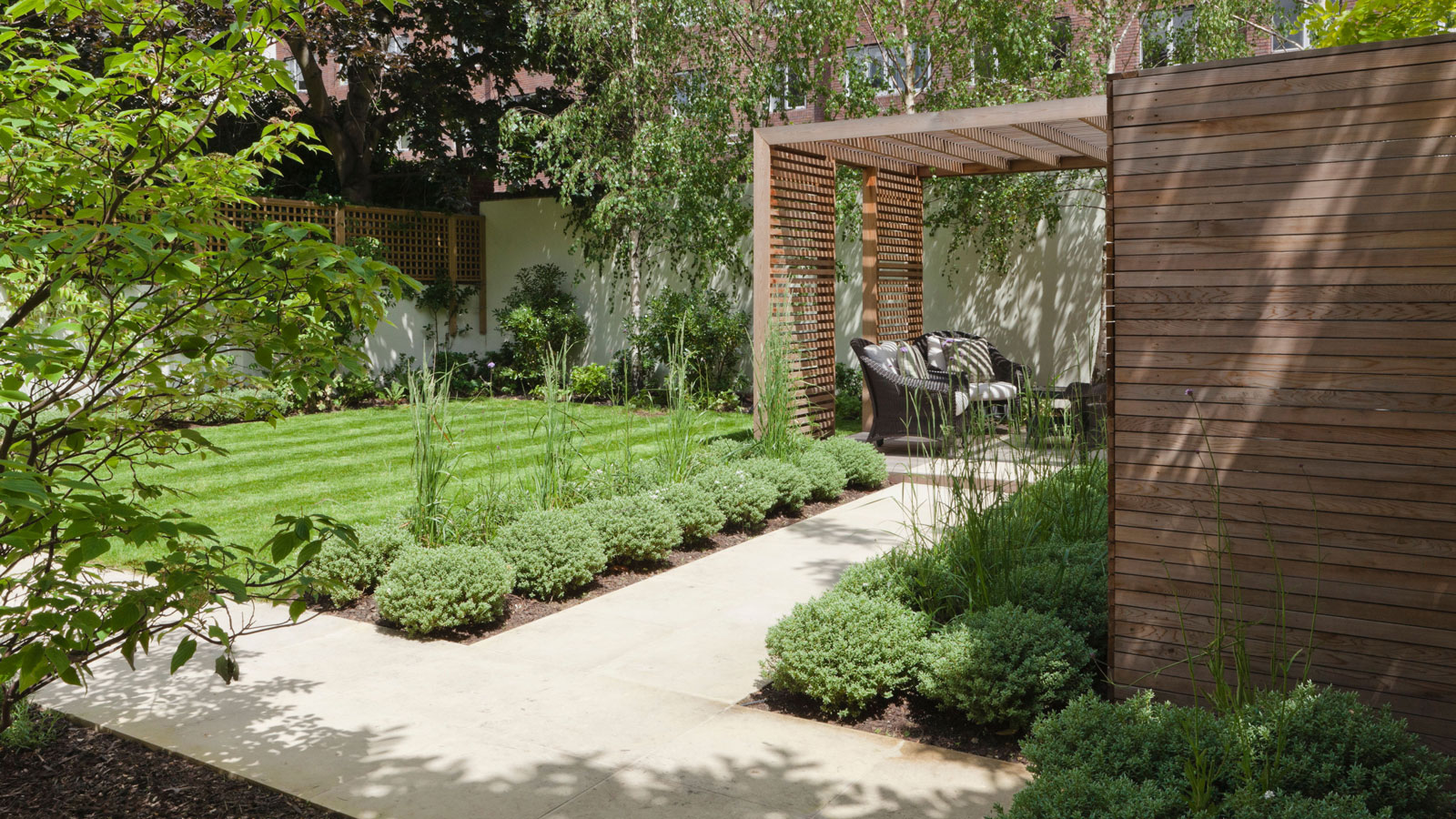
When it comes to designing any garden, the planning stage is always important, and never more so than when looking for L-shaped garden ideas. It can be tricky if one section of the 'L' is long and narrow, or if you're gardening in a small space.
The first thing to consider is whether you want to treat the L-shape as two separate spaces or one continuous garden. If you choose to zone into two individual gardens, there's plenty of scope for introducing different gardening style ideas within these separate, contained spaces.
Alternatively, if you plan for one continuous garden the biggest challenge is often how to link them and make the whole space feel cohesive, especially as the aspect will likely be variable, so you could be dealing with both sun and shade planting requirements. We spoke to garden designers to get their expert L-shaped garden ideas, including the best types of landscaping and other backyard ideas to achieve a stylish and cohesive look.
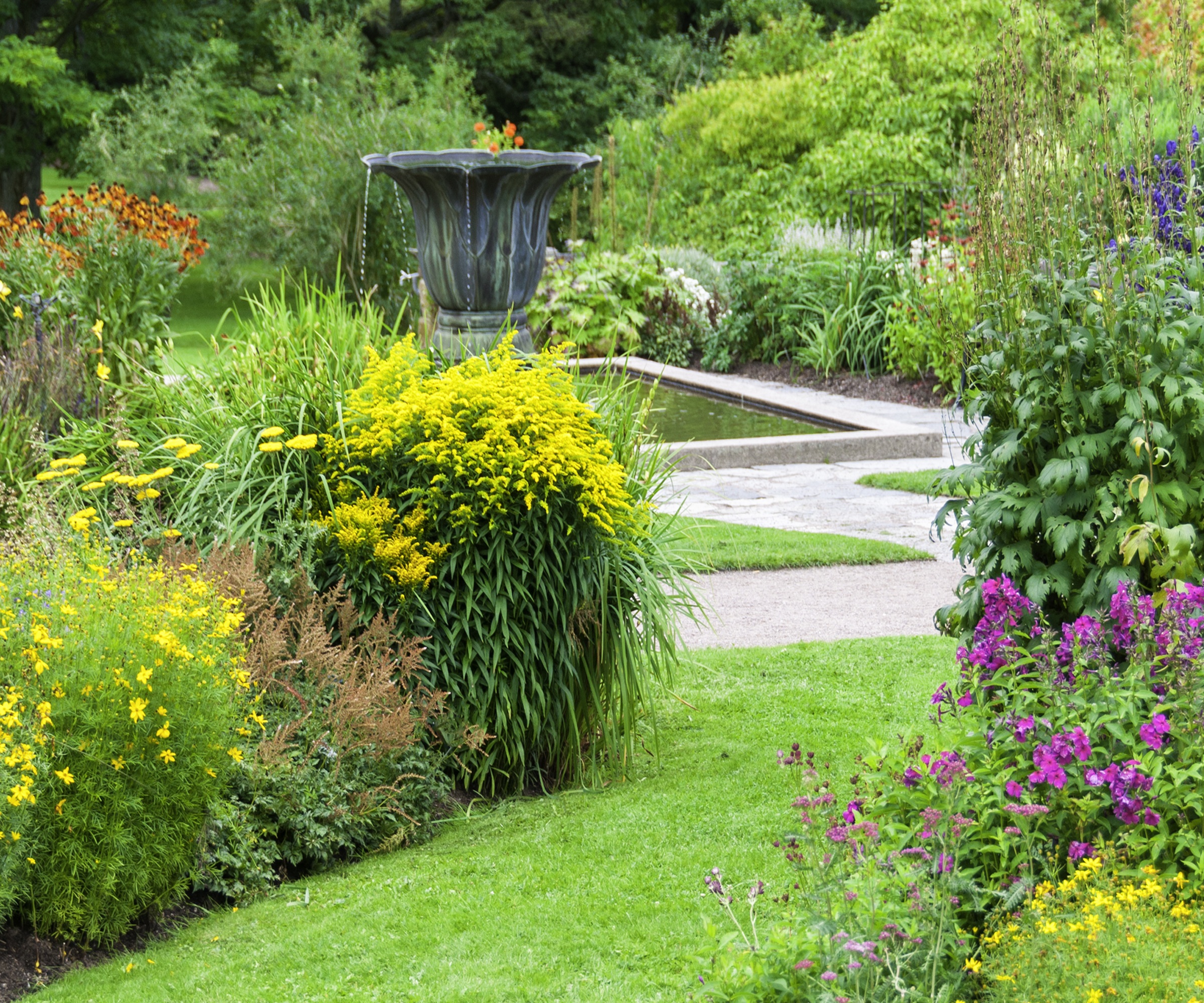
This L-shaped garden uses planting as a unifying element
8 of the best ideas for L-shaped gardens
Knowing what you want from your L-shaped garden is the key to a successful design. Aim for a balance between functionality and aesthetics: you'll want to create a visually pleasing space while at the same time making sure that the garden serves its purpose.
'L-shaped gardens offer a wonderful opportunity to create a layered, intriguing outdoor space, one that feels full of discovery and elegant rhythm,' says architectural designer Bryonie Brooks. 'Although their irregular footprint may initially seem challenging, when approached with imagination and a clear plan, an L-shaped garden can become one of the most characterful and versatile areas of your home.'
Now is your opportunity to capitalize on your garden's point of difference with some of the best awkward-shaped garden ideas to turn it into something extra special.

Bryonie Brooks co-founded BBH Design with husband Jamie in 2020. Since then, she has been dedicated to designing exquisite luxury homes around the world, alongside select clients who resonate with their vision of harmonious living. Bryonie excels in balancing landscape, architecture, and interiors, creating spaces that foster joy and tranquility while ensuring a strong connection with nature.
1. Embrace the differences an L-shaped garden offers
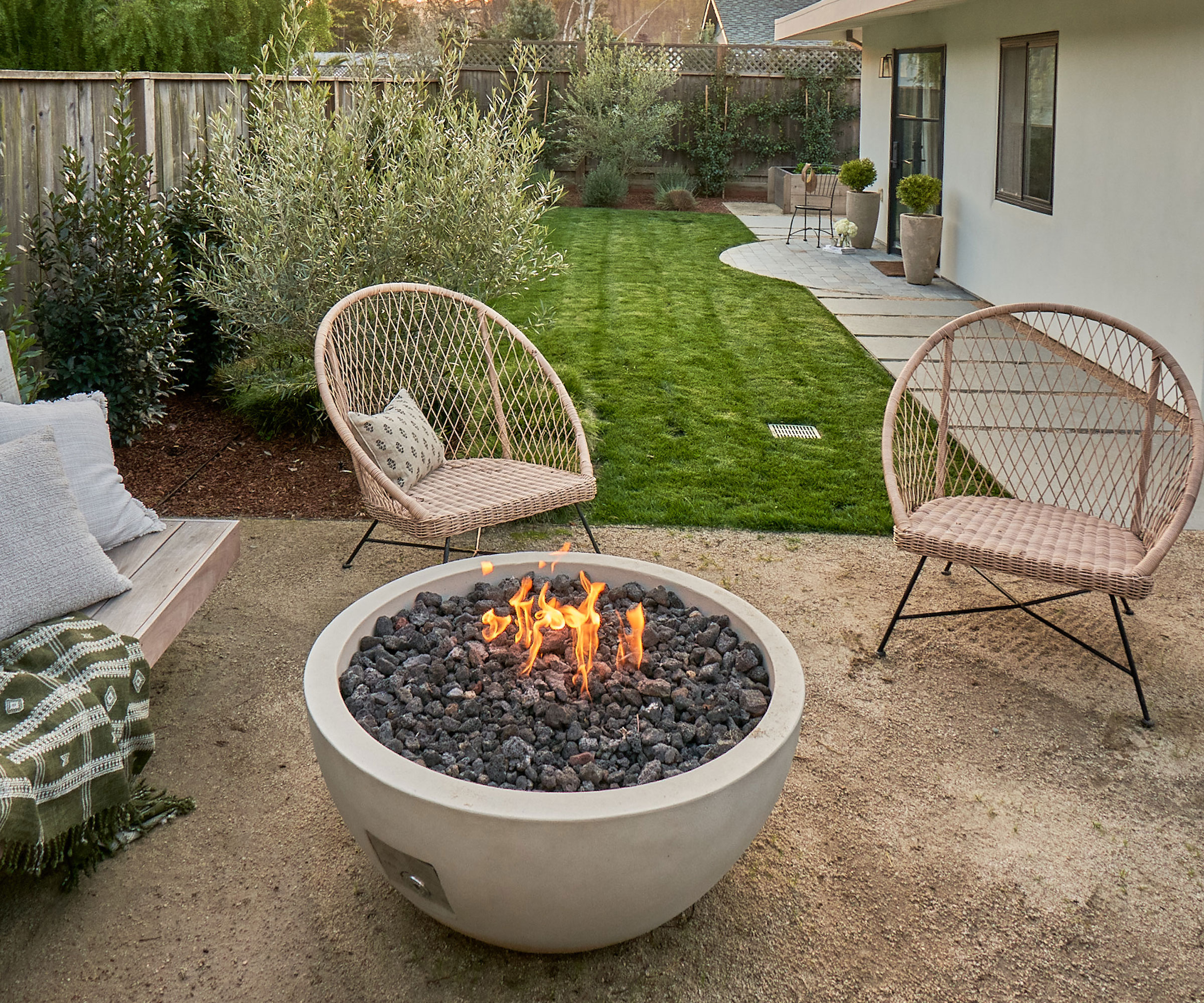
This L-shaped garden has an entertaining area in one part of the L and a vegetable garden in raised beds in the other
If you're torn between two contrasting styles of garden design there's never been a better time to celebrate their differences. The layout of L-shaped gardens means there's an opportunity to turn your backyard into two separate spaces, so you can opt for two very different styles if you like the idea of mixing things up a little.
Design expertise in your inbox – from inspiring decorating ideas and beautiful celebrity homes to practical gardening advice and shopping round-ups.
'When designing an L-shaped garden, begin by embracing its natural division,' says Bryonie. 'This distinctive form lends itself beautifully to creating distinct areas. Typically, one 'arm' (usually the wider or more open one) can host the primary entertaining space – think a sun-drenched terrace, outdoor dining area, or elegant lounge. Meanwhile, the narrower arm might be transformed into a quieter retreat: a reading nook under a pergola, a secluded water feature, or even a productive kitchen garden.'
The design featured here comprises a thriving vegetable plot in a series of raised beds in one part of the L (just seen) and an entertaining space in the other. Try these galvanised raised beds from Walmart for a super stylish way to grow vegetables. Or why not try landscaping with evergreens for a formal look in one garden, and a more wild and naturalistic planting design in the other to make a real contrast of styles.
2. Zone an L-shaped garden
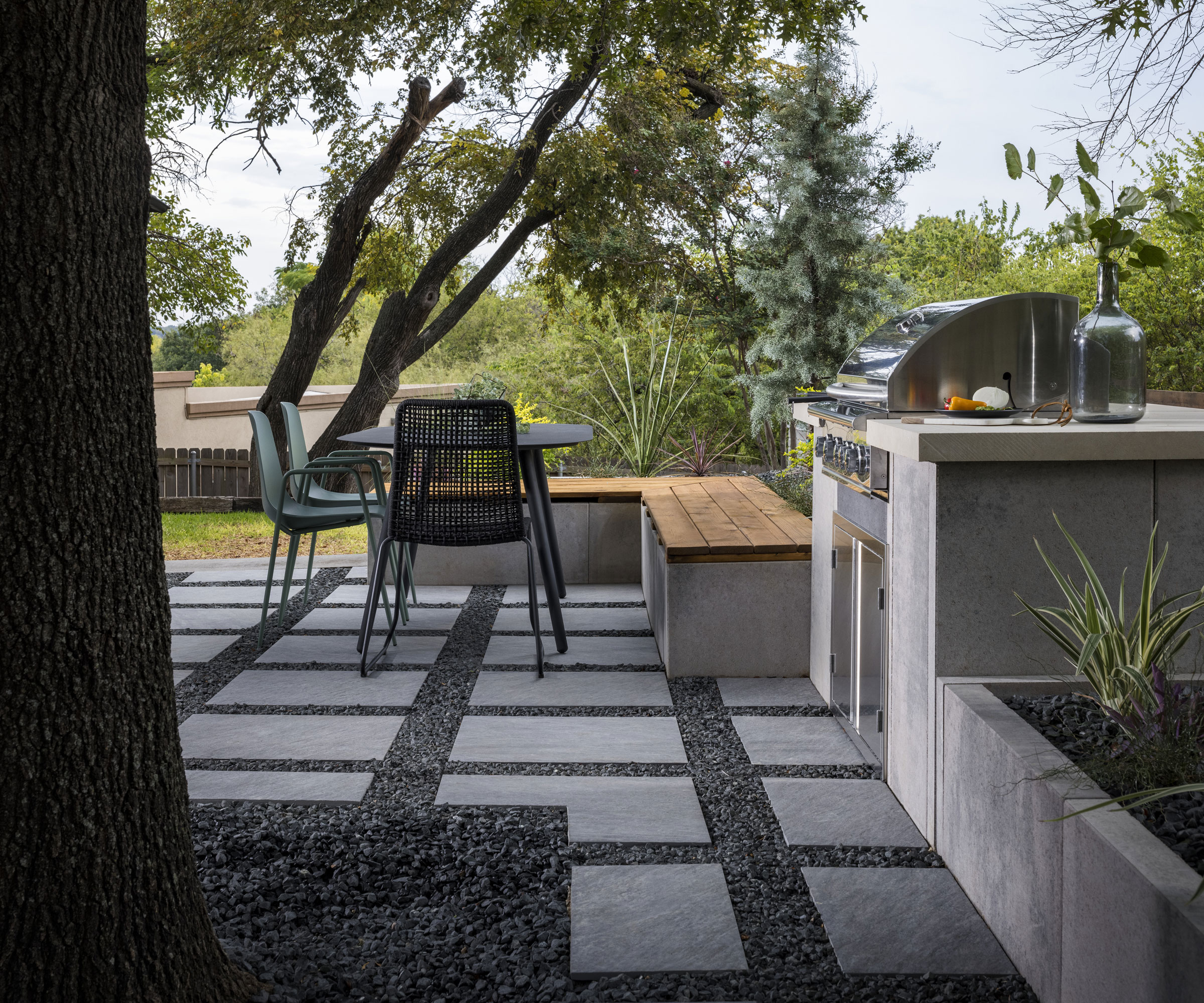
Quarziti porcelain paver patio with modular Artforms™ outdoor kitchen, planters and bench seating by Belgard
'L-shaped gardens offer various benefits to help make the most of a space, especially if it's a corner lot or an oddly shaped yard,' says Joe Raboine. 'They naturally lend themselves to garden zoning, and creating intentional areas in an outdoor space.'
Zoning is the first step to making L-shaped garden ideas more user friendly. Put simply, zoning is the process whereby areas of a garden are sectioned off for specific uses such as a relaxation spot, outdoor kitchen area, grow-your-own space or quiet corner. This helps to create a very liveable outdoor space that works with the dimensions of your garden.
'For subtle definition of zoned areas choose different hardscaping materials, switching between timber deck ideas, textured stone, and fine gravel to guide the eye naturally from one area to the next,' suggests Bryonie.

Joe Raboine strives to promote the idea that outdoor living is not only a good investment for homeowners but can also fundamentally change lives for the better by bringing people together. In his current role, Joe oversees the Belgard Residential Program. He started his career as a contractor over 25 years ago.
3. Repeat the L-shaped theme with hardscaping
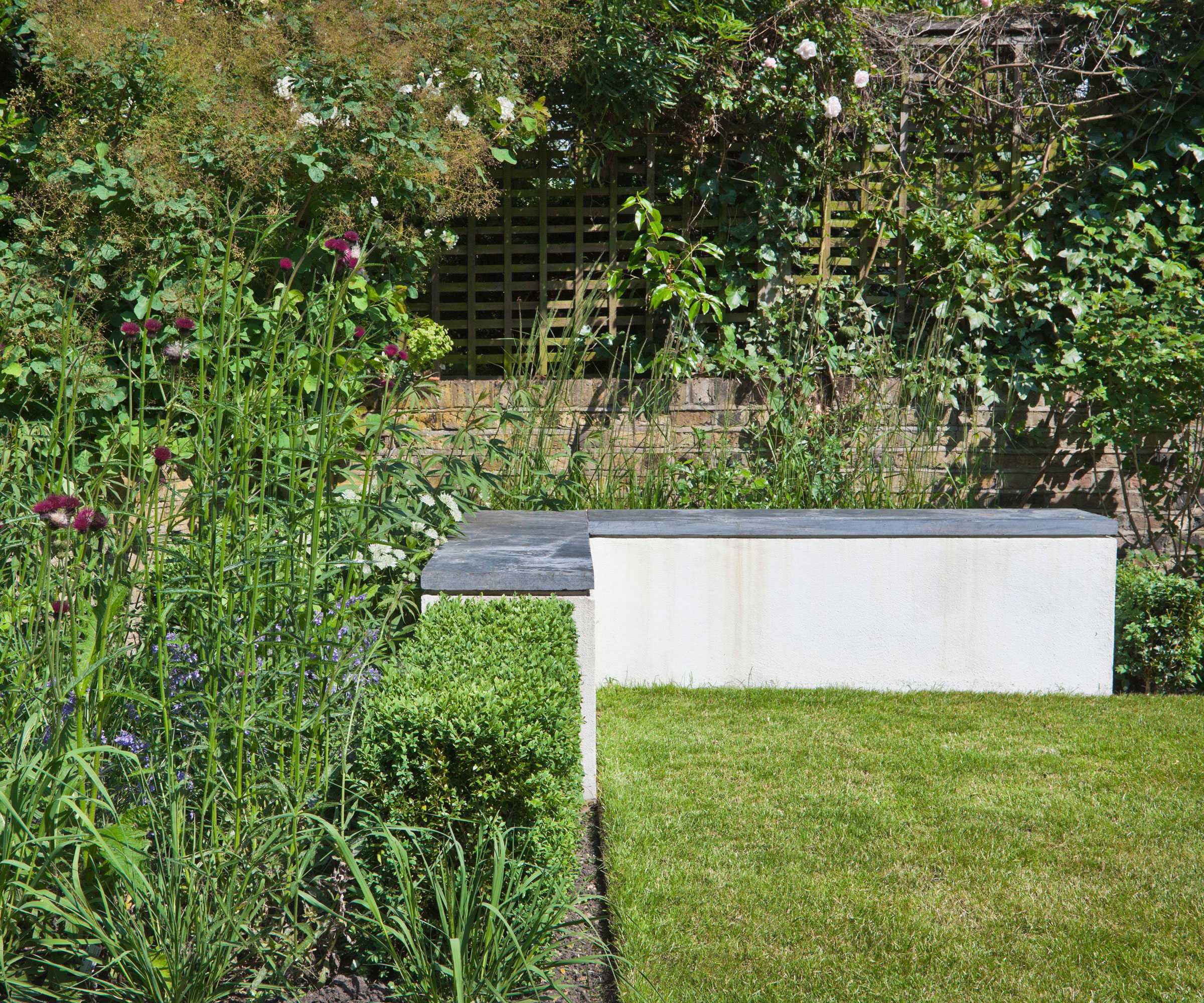
A key element in all the best garden design projects is creating rhythm by the use of repeated elements to lead the eye through the garden. Adding an angular L-shaped feature like this simple concrete bench into a garden layout works well to reinforce the formality of the overall design.
Repeating shapes within the garden also helps the design flow between different areas, and holds it together. The repeated hardscaping element can also be paved backyard ideas or landscaping with gravel to create unity and flow through the space. This is especially important as a linking device if you are keeping the L-shaped garden as one design.
In terms of hardscaping materials, porcelain and natural limestone work well for modern L-shaped gardens, along with concrete, metal and wood. Meanwhile stone and brick are a good fit for more traditional gardens.
4. Choose a combination of sun and shade planting

Best of both worlds: this shady planting design creates a woodland-like atmosphere. The trees are under-planted with woodland edging plants, varying from deep shade corners to more open, sunnier woodland glades.
Planting an L-shaped garden is usually a win-win. This is because you can generally have the best of both worlds with the pick of sun-loving plants and south-facing garden ideas combined with the best shade plants, depending of course on the aspect of your garden.
When considering how to plan a garden you may find yourself wondering what to do with a long, narrow strip that's in the shade. If this is the case you'll probably need north facing garden ideas to get the most out of the space.
Whether you’ve a tiny L-shaped courtyard or a good-sized plot, the trick is to pick the plants that will thrive according to these conditions.
5. Use paths as a linking device
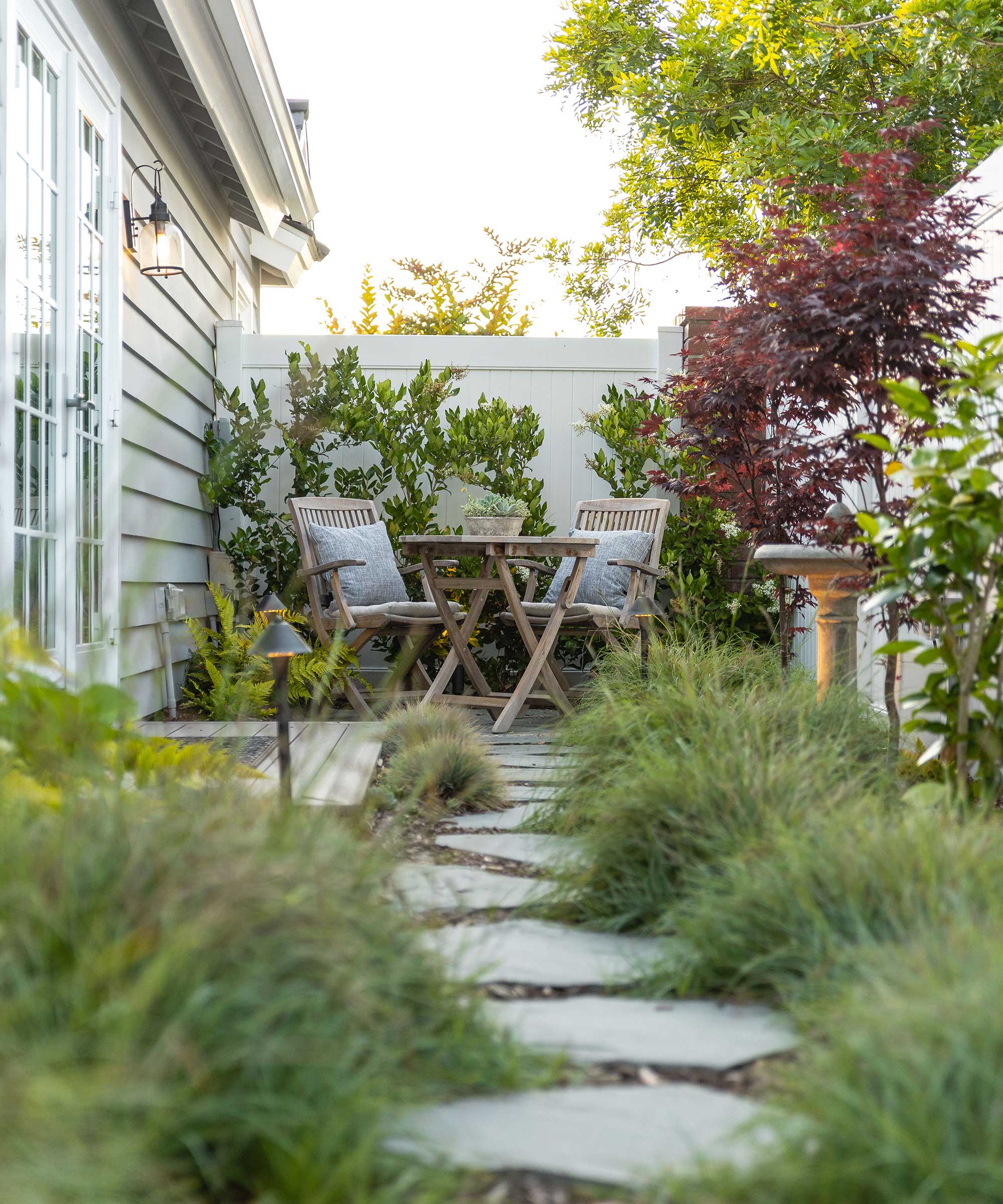
An interesting path design adds a crucial link from one area to the next
Another key element to consider in L-shaped garden design is the use of garden path ideas. These create a sense of flow and movement between one area and the next, and are a feature in their own right if you choose the best materials.
If one part of your L-shaped garden is long and narrow, try using shapes that make the space feel wider to link to the other part of the garden. A meandering stepping stone path will work in even the narrowest space, and is ideal to provide an interesting visual link to get from one area to the next.
'To fully exploit an L-shaped garden's potential, it is essential to create an easy, enticing flow between spaces,' says Bryonie. 'Diagonal pathways can elongate sight lines and add dynamism. Mirrors and decorative screens placed strategically reflect light and give a sense of greater depth.'
Bryonie also suggests introducing focal points, perhaps an ornamental tree, a sculpture, or a statement container, at the end of each 'arm' of the L-shaped garden to draw the eye onward and encourage movement.
6. Turn the corner into a feature
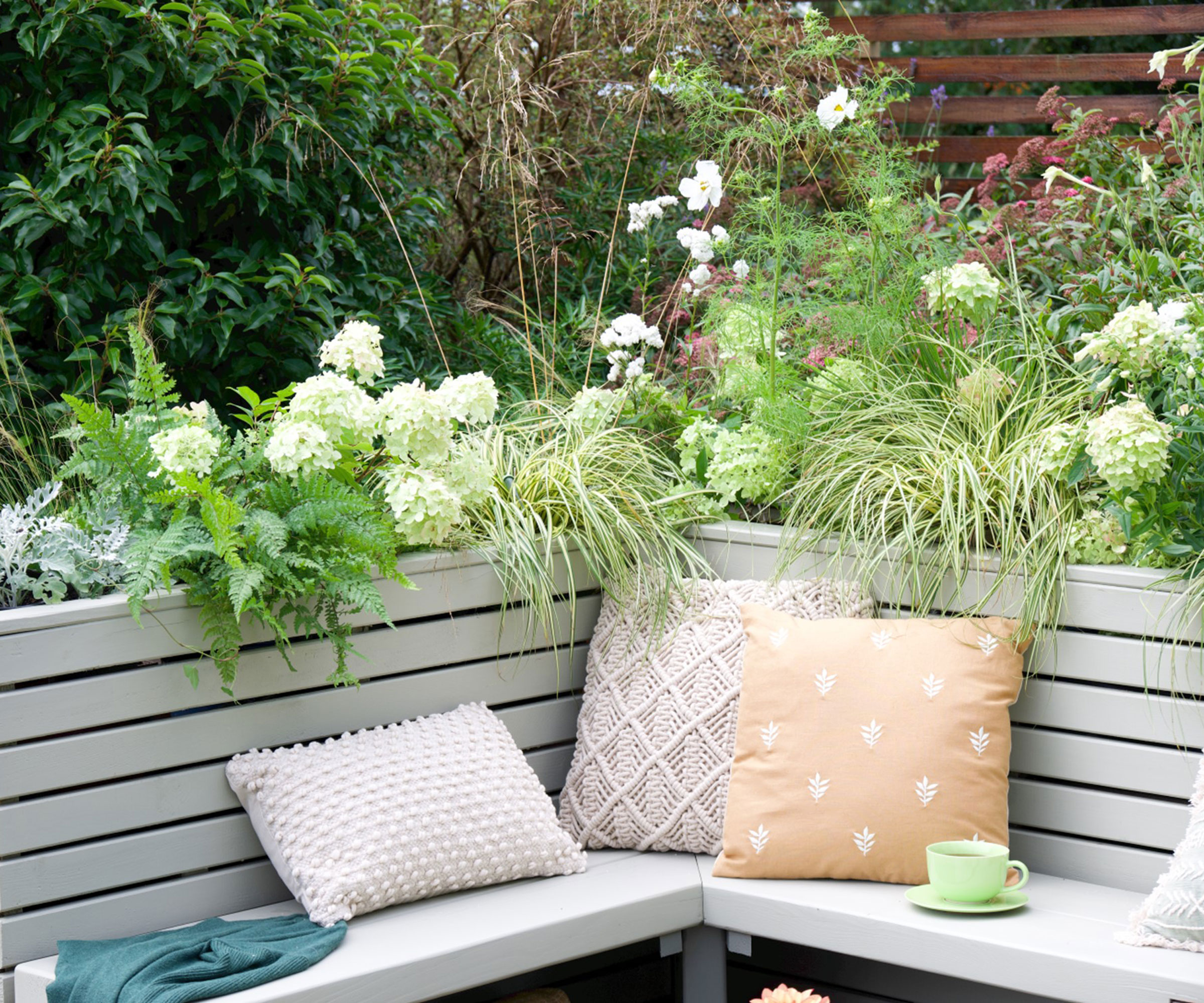
The 'corner' of the L-shaped garden is a great opportunity for L-shaped seating ideas, and raised bed planting around helps make it feel natural within the setting
L-shaped gardens offer a great opportunity to style up a corner spot so it becomes a real focal point. Choose planting, seating or some other eye catching element to give the corner standout. This can help avoid “dead zones” in the corner of your garden.
Seating areas can be turned into a real asset as part of L-shaped garden ideas. Built-in benches work particularly well tucked into corners or edges, making efficient use of space. Even better if seating is surrounded by raised garden beds to add an eye-catching focal point to a corner design. One of the benefits of raised beds in an L-shaped garden is that you can take advantage of the corners to make smart use of the space.
'Raised garden beds are an integral part of any garden design, and L-shaped gardens are no exception,' says garden designer Jen McDonald. 'By incorporating well-planned garden beds, you can introduce a variety of plants, flowers, and shrubs, adding color and texture to the space.' Try some lovely Annabelle hydrangeas from Nature Hills Nursery, as seen planted up in this design.
This allows you to create privacy within a secluded nook. Look out for easy modular components that allow you to put together an L-shaped raised garden bed with built-in seating. A practical word of advice from Jen: 'When planning out L-shaped gardens, I recommend adding in comfortable pathways around each bed of 2-3 feet wide.'

Jen McDonald is a a garden designer and co-founder of Garden Girls. She is certified with NPSOT (Native and Pollinator Society of Texas) and as an organic vegetable specialist.
7. Make the two spaces relate to each other
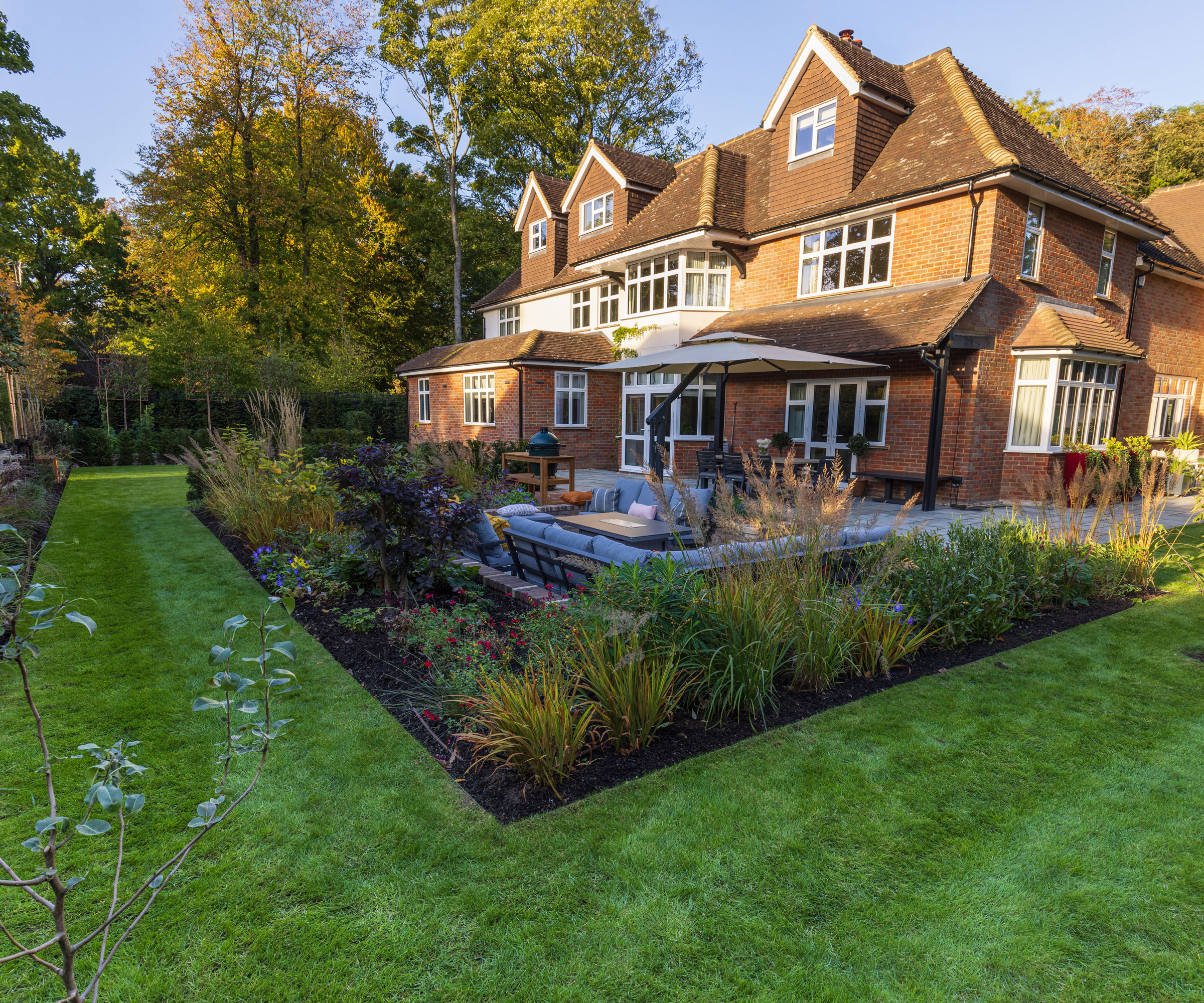
This garden design shows how an L-shaped garden is a great opportunity to enhance a larger plot
This L-shaped garden has a wide and shallow ‘back’ garden, which meant the fenced boundaries were very dominant and the owners wanted increased privacy from the neighbours. The ’side’ garden that adjoins it was not used, as it was just lawn with a couple of big trees dominating the space.
'The new design focused on making the boundaries disappear as much as possible, using established yew hedging and pleached trees above the fence line, and making the two sides of the L feel like they related to each other, while remaining spaces with their own character,' explains garden designer Sam Proctor.
A sunken seating area is surrounded by naturalistic planting at eye level, for an immersive experience. 'This is the focal point of the space, and even though it’s not very far from the house, the mere journey of travelling down a few shallow steps and entering a different atmosphere gives you a sense of separation from domestic life indoors.'

Chiltern Garden Design is the brainchild of Sam Proctor MSGLD, who creates beautiful gardens to suit the needs and lifestyle of her clients. She created her first award-winning show garden in 2024, The Water Saving Garden, at RHS Chelsea, highlighting ways to capture, store and reuse rainwater in a domestic courtyard.
8. Soften the hard angles with planting and lighting
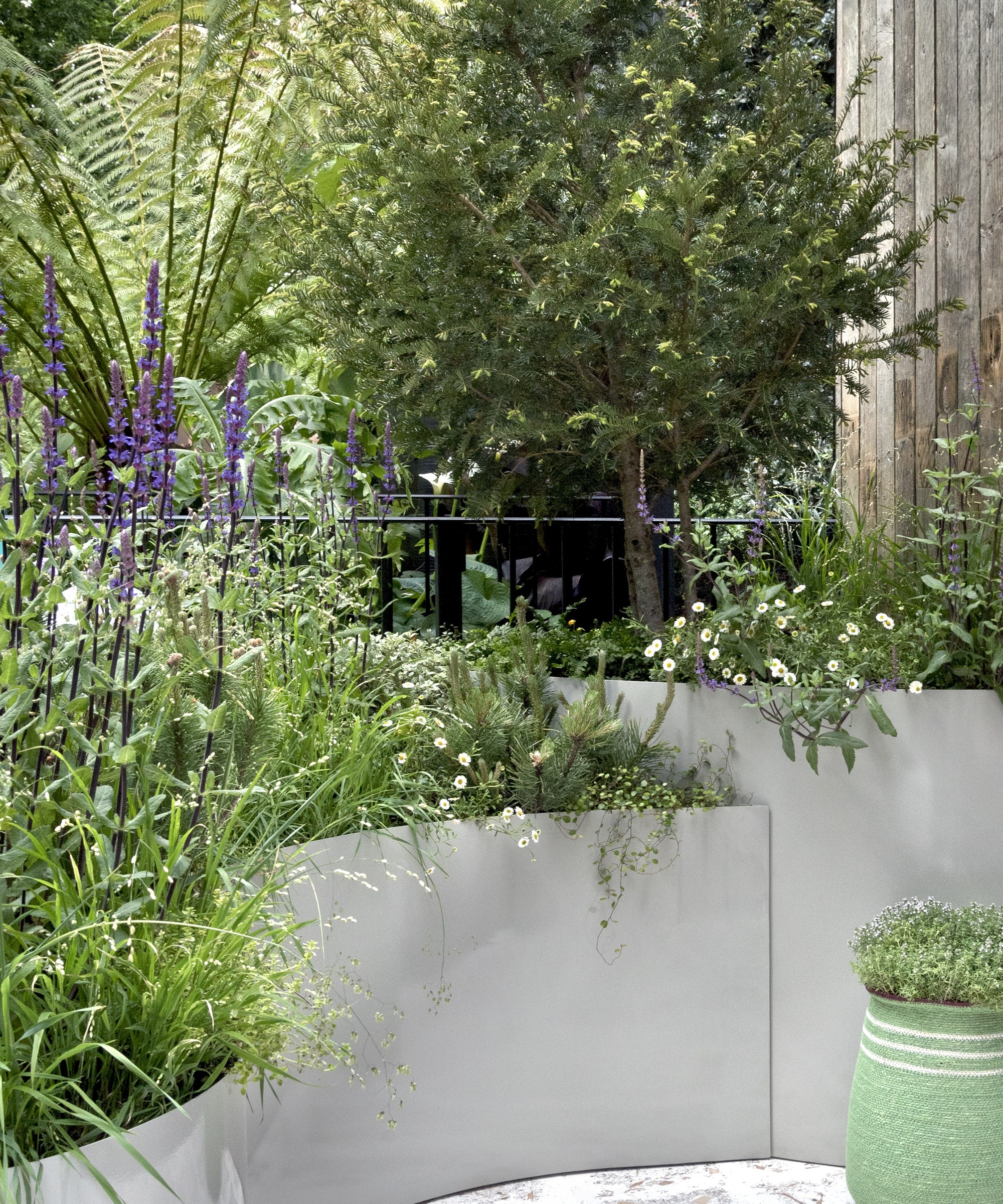
Lush planting in curved raised beds knocks the edges off L-shaped gardens. Repeat planting of a few varieties or colors in both 'arms' subtly unites the overall design.
Planting is often the best way to smudge the edges if your garden design is looking a little too angular. 'Softening the hard angles in L-shaped garden ideas is vital,' says Bryonie. 'Gently curving beds, sweeping borders, and circular patios can all help balance the geometry and foster a more organic, natural feel.'
Planting should feel generous and immersive, adds Bryonie. 'I often recommend a combination of textural foliage and loose, romantic perennials to weave a sense of abundance. Use climbers (like clematis, jasmine, or roses) on pergolas or trellises to provide height and privacy too.'
Bryonie also suggests hiding garden structures like a garden studio, potting shed or greenhouse by tall planting or a living green roof to blend beautifully into the design and soften the scene.
Lighting, meanwhile, brings the space alive after dusk, and also helps blur the edges. 'Uplighting trees, laying soft pools of light along paths, and adding delicate festoon lights overhead can all weave a little magic into L-shaped garden ideas,' says Bryonie.
If you are inspired by these suggestions now check out our expert advice for other difficult spaces such as narrow garden ideas, as well as more formal garden design, which are often key factors for creating the best L-shaped garden ideas.

Lifestyle journalist Sarah Wilson writes about garden design and landscaping trends for Homes & Gardens. She has studied introductory garden and landscape design, and also has an RHS Level 2 qualification in the Principles of Plant Growth and Development. She is a regular contributor to Homes & Gardens and Livingetc. She has also written for Country Living, Country Homes & Interiors, and Modern Gardens magazines